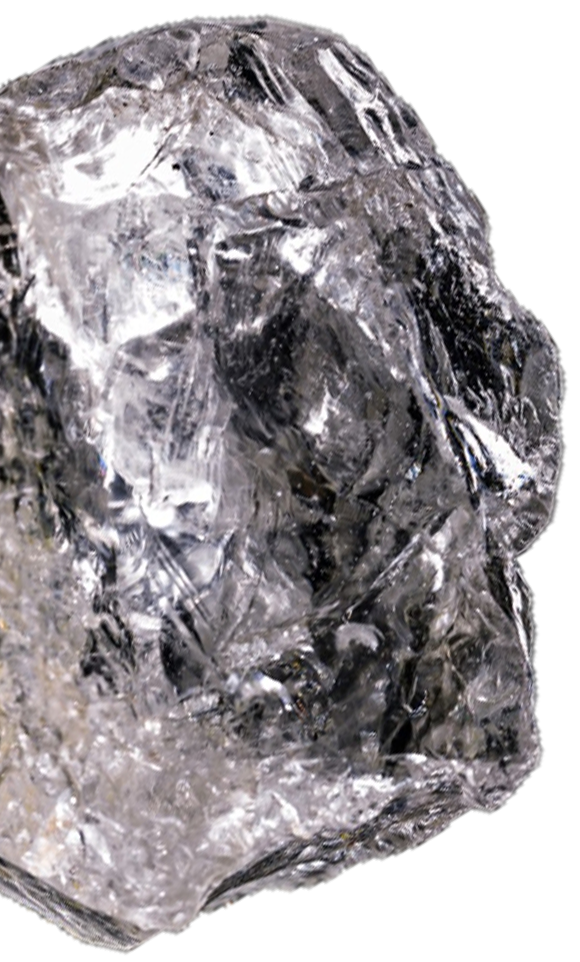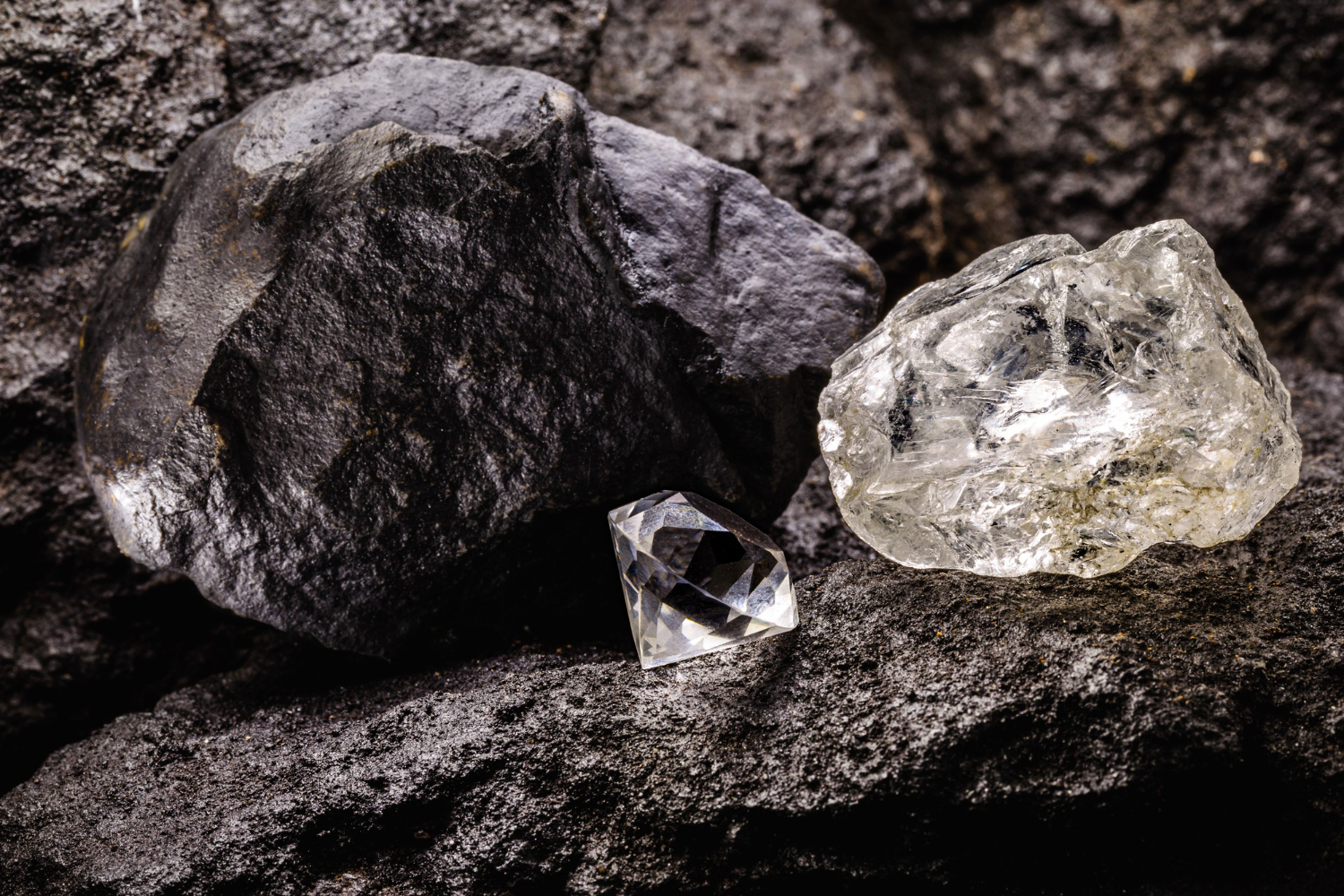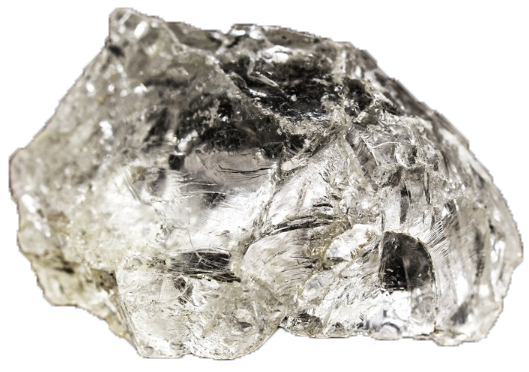Diamond | April
Diamonds, belonging to a mineral family of their own, exhibit a remarkable spectrum of colors. Exploring the distinct color variations within this extraordinary mineral species can offer invaluable revelations.
Diamond: The Radiant Gem of April
Amid the grand tapestry of time, as constellations etched their celestial stories, an enduring tradition emerged, weaving a celestial connection with Earth – the world of birthstones. Conceived by luminaries such as Flavius Josephus, this tradition forged an intimate bond between zodiac constellations and earthly gemstones. From this cosmic choreography, beneath the celestial influence of April, steps forth the Diamond – a gem that doesn’t merely sparkle but resonates with millennia of history and the timeless rhythm of the universe.
Envision, through the lens of ancient wisdom and contemporary science, a gemstone that originates deep within the Earth’s mantle, crystallizing amid the planet’s fiery core. Forged by the Earth’s titanic geological forces, the Diamond stands as a testament to the strength inherent in souls born in April. Its name is derived from the Greek word “adámas,” meaning “unbreakable” or “indestructible,” symbolizing enduring love and unwavering commitment.
Throughout history, Diamonds have been cherished by diverse cultures around the world. They have been a symbol of wealth, purity, and eternal love. The ancients believed that Diamonds were fragments of stars, and they attributed magical properties to these precious gems.
With a range of colors, from the classic colorless to a spectrum of vivid hues, Diamonds mirror the diverse personalities and desires of those born in April. Modern science has unveiled the factors that influence their colors, revealing their unique characteristics, from the clarity of purest ice to the warmth of their colored counterparts.
Beyond their extraordinary beauty, Diamonds transcend into the realms of modern science. They are revered by geologists for the insights they offer into the Earth’s geological history. These gems find applications in industries from luxury to technology. Yet, at their core, they remain a symbol of love, beauty, and cosmic wonder.
So, for souls graced by April’s influence, why Diamonds? Because they are more than gems; they are celestial messengers, emblems of love, and vessels for both age-old legends and scientific fascination.
In the embrace of Diamonds, one discovers the confluence of eternal myths, contemporary marvels, and the timeless cadence of the cosmos.

Diamond: The Eternal Gem of April
Color Varieties: Diamonds, famed for their exceptional clarity and captivating play of light, are primarily known for their colorlessness. However, this precious gem exhibits a mesmerizing spectrum of colors, from rare, intense blues and vibrant pinks to sunny yellows and elegant greens, each reflecting nature’s infinite diversity.
Common Diamond Varieties:
- Fancy Colored Diamonds: These Diamonds, in hues beyond the traditional color range, present a captivating kaleidoscope of colors, with the Hope Diamond’s deep blue and the Pink Star Diamond’s vivid pink standing as iconic examples.
Formation and Occurrence: Diamonds are crafted deep within the Earth’s mantle, where immense heat and pressure metamorphose carbon into its most coveted crystalline form. These precious gems are brought to the surface via volcanic eruptions, encapsulated in igneous rocks known as kimberlites and lamproites. Notably, the Argyle Mine in Australia has been a renowned source of Pink Diamonds.

Modern Uses: In contemporary times, Diamonds remain an emblem of timeless beauty, admired for their brilliance and durability. They adorn engagement rings, fine jewelry, and high-end watches, embodying luxury and sophistication. Furthermore, Diamonds have found their place in various industrial applications, where their remarkable hardness proves indispensable. Diamonds, with their enduring allure, continue to be the gem of choice for those celebrating April birthdays, exemplifying both nature’s mastery and the grandeur of human achievement.
Scientific Fact: "Earth's Enduring Gemological Treasure"

Diamonds, renowned for their unparalleled beauty and remarkable properties, also hold a crucial place in the field of geology. These extraordinary gemstones originate deep within the Earth, under conditions of immense pressure and temperature. Diamonds are primarily found within volcanic pipes, brought to the surface by volcanic eruptions. This geological origin makes Diamonds invaluable to geologists, offering profound insights into Earth’s geological history and the processes shaping our planet.
The famous colorlessness of Diamonds is due to their pure carbon composition, with their unrivaled brilliance arising from their crystal structure and the way they interact with light. However, Diamonds can also occur in a spectrum of colors, from deep blues to vibrant pinks, as a result of trace elements and lattice defects.
Geologists recognize Diamonds as crucial indicators, shedding light on Earth’s deep geological past. The presence of Diamonds in specific rock formations provides clues about the geological conditions and forces that existed during their formation. They offer insights into the mantle-crust connection and the movement of carbon through Earth’s dynamic systems.
Apart from their geological significance, Diamonds continue to be celebrated for their beauty, symbolism, and utility in various industries, including the production of high-precision cutting tools and advanced electronics.
Diamonds, with their timeless allure, bridge the realms of science, beauty, and human fascination, making them not only the ultimate gem but also a geological treasure of unparalleled value.
